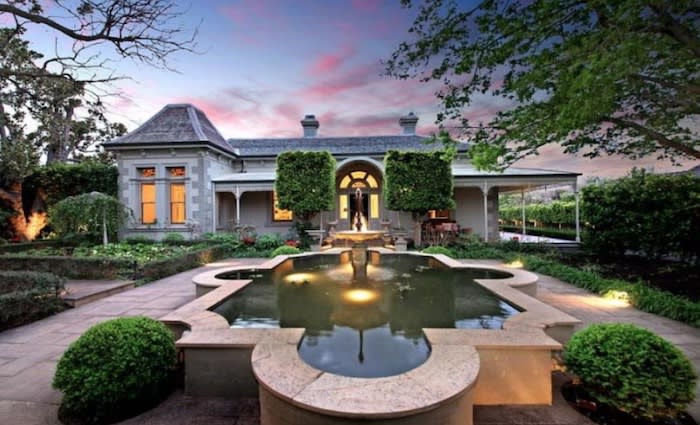Jonathan ChancellorMarch 13, 2018
After just 20 months ownership, the test cricket legend Shane Warne seems to have profited handsomely from flipping his Melbourne home.
It was the heritage Brighton trophy home he bought in August 2016 for $14.2 million and sold last month for a reputed $20 million.
The spin king's off market sale was flipping at its best.
Flipping is a popular term used to describe short term property trading.
Perhaps Warne didn't have the intent of reselling the property in a short time frame for a profit, but he certainly knew how to ride the capital growth curve.
Without any marketing photos it's not possible to confirm the before and after, but it doesn't appear he spent much adding value to the property second time around.
That was done when he owned Melville the first time, paying $3.6 million in 2000, then spending that amount again on a major renovation and extension, and selling the matrimonial home in 2007 for $8.8 million.
Property analysts, CoreLogic which now produce a flipping report, found flipping most prevalent in Sydney and Melbourne.
Across Sydney 6.8 per cent of all property re-sales over the past year were flips between one and two years of property ownership.
Regional Queensland (6.6 per cent) and
Melbourne (6.4 per cent) also recorded a higher percentage of property sales as flips.
Although values have been rising there had not been an accompanying substantial increase in flipping behaviour.
Certainly not like the rise witnessed during the early 2000s housing boom.
But when Sydney vendors do flip, they are in most instances flipping for a profit.
In Sydney, only 5.7 per cent of flips within one to two years of purchase were at a loss, compared to 37 per cent a decade or so ago.
At close to 95 percent, regional NSW last year recorded the highest percentage of flips at a profit within one to two years of purchase, followed by Sydney (94 percent) and Melbourne (93 percent).
The national average was 89 percent.
Interestingly it was the Illawarra region that experienced the highest level of flips in NSW - 8.7 per cent of resales - along with the highest annual increase in flipping - and Illawarra was among the most profitable regions in NSW, with only around two per cent of properties flipped at a loss.
The NSW Southern Highlands and Shoalhaven regions also saw profits, actually recording no losses for flips less than a year, and just 0.9 per cent from one to two years.
In order to make a profit, flippers need to recoup their transactional costs including stamp duty, conveyancing, the marketing and real estate agent commission.
Vendors in Perth, Hobart, Darwin, and the regions of SA, WA, Tasmania and the NT were the most likely to flip their properties for a loss, given value growth has been sluggish for a number of years.
This article was first published in the Saturday Daily Telegraph.
